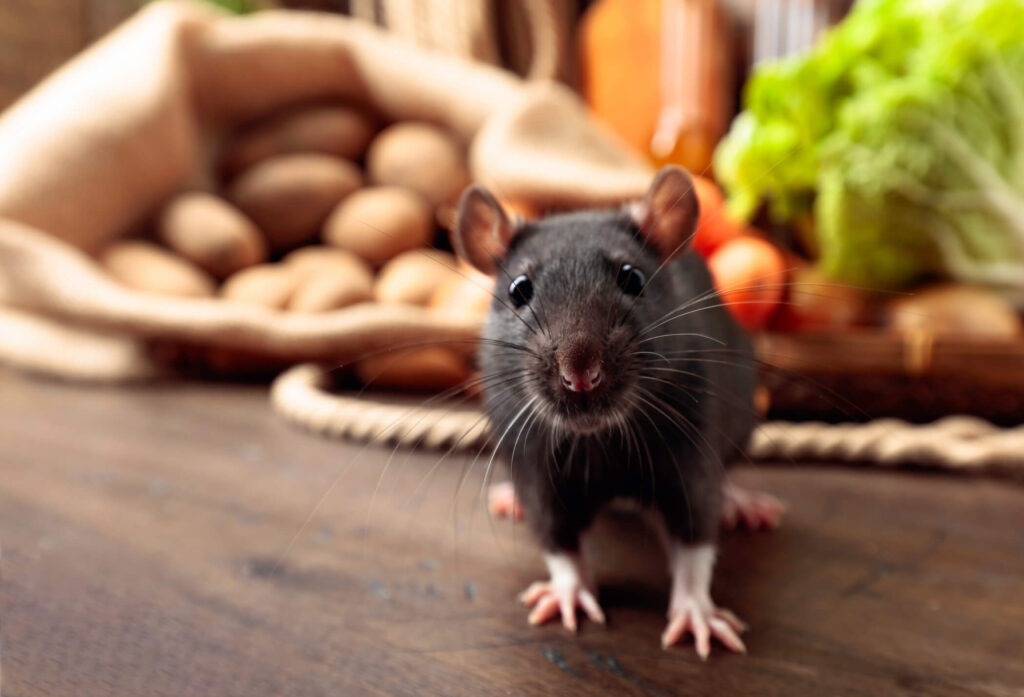There’s a rat in my kitchen, what am I gonna do?
- Published: 13th Mar 23
- Category: Resources
With hints of Spring just around the corner and warmer weather approaching (hopefully), rats and mice begin to breed more fervently. Correspondingly the number of calls to landlords also increase, as tenants ring to let them know they have just seen a family of rodents scuttle across the floor. The inevitable question for landlords is, “Is this my responsibility?”.
During the warmer months growing numbers of our furry friends tend to seek comfortable new homes either in outside burrows, or (if they have any forethought of the British weather in the summer), inside dry, cosy houses.
The wasp season begins in earnest in April peaking in the summer months and invariably nests are built in roof spaces or other accessible areas of a property. Bees, ants, grass fleas and a whole host of other insects can all make an appearance and lead to infestations during this time.
Responsibility for dealing with them will depend on where the infestation is and the reason. If it is in the garden or outside of the main structure, then there is little the landlord can do. It is an act of nature and the tenant should make sure they are not doing anything to encourage this. Bird seed on the ground will be just too tempting for rats and mice.
Where the tenant reports an infestation inside the property, then in the first instance the landlord should investigate. A pest controller from a reputable company or the local authority can visit and assess the situation. They should also be asked to advise on how they are entering the property. Assuming that their report concludes that they are entering via a hole in the wall or roof, then this becomes the landlords responsibility (more on that in a moment).
Where there is a mischief of rats queuing up at the back door because of the tenants actions, then it will become the responsibility of the tenant to deal with. Examples might include food being left out on the floor or worksurfaces, or bins are not being emptied regularly. The tenant would then be expected to pay for the pest control or find a way of stopping the infestation.
That said, the Tenant Fees Act 2019 prohibits landlords from contracting their tenants to a third party service. This means that a landlord cannot make a tenant hire or pay for a pest controller to remove any vermin or pests. So, whilst the tenant is responsible it will be up to them how they deal with it. If it is not done effectively then you have a situation where it amounts to breach of tenancy. Then where the landlord ends up paying for removal a claim can be made against the tenant (usually via the deposit at the end).
It is a more common occurrence that pests are able to get into the property through the structure. Section 11 of the Landlord and Tenant Act 1985 is commonly known as the landlords repairing obligations. That is, this is what the law requires a landlord to do. Within Section 11 (1) (a) it states:
(a)to keep in repair the structure and exterior of the dwelling-house (including drains, gutters and external pipes).
You can see therefore that any defect in the structure that allows access to pests, will mean that the landlord is responsible for dealing with the access point, and the costs of removing the pests.
This would even apply if there is a hole in the party wall of adjoining properties. So, having feasted on the neighbours loft insulation mice then make their way to your loft, you will have the same issue.
Regular readers of our articles will know that when it comes to tenancy law, these things are never as straightforward as they first appear!
If you are in need of further help on this area, please do get in touch!
Please note the date this article was published as the law or the essence may have changed since it was posted. You should always seek independent legal advice if you are intending to rely on any of the contents. Unless stated otherwise this article only reflects the position for the Private Rented Sector in England and therefore may not apply to other countries within the United Kingdom.
All resources & news
